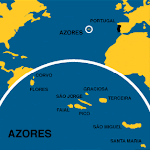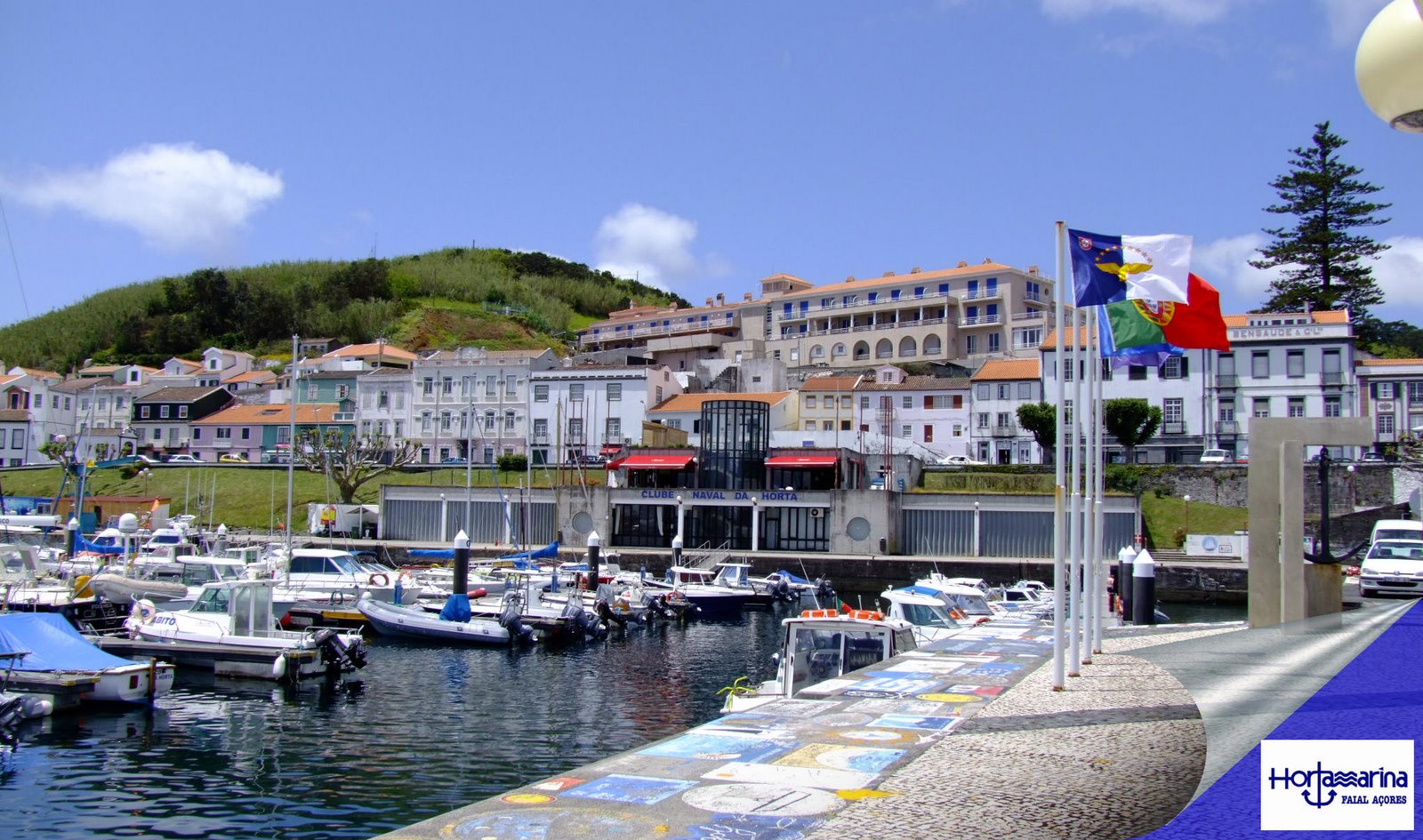OUTRAS REPORTAGENS:
Aqui ficam os excertos sobre o Faial:
"The channel between Madalena and Horta, the main town of Faial, is only four miles wide, and we scooted across in a quarter of an hour, past Horta's marina, the main stopping-off point for transatlantic sailors, its long breakwater daubed with paintings and drawings by transient yachtsmen. Outside the distant main island of São Miguel, Horta is the liveliest place in the Azores and Peter's Bar on the quayside is a jolly exchange and mart for the yachting fraternity who stagger around in that bow-legged way that owes more to conviviality than to the weeks at sea. The walls are festooned with sailing memorabilia, and a noticeboard serves as a job centre for the marooned or disaffected: "Anyone going to Cape Town? I'll cook, swab, even clean the heads!"; "Crew wanted for Rio . . . "
Faial is the most charmingly rustic of the central islands, rising gently through fields, meadows and villages, like those of northern Portugal, to its single volcanic crater.
The countryside is beribboned with hedges of blue hydrangea and, here and there, the fields run down to sandy beaches, something of a rarity in these rocky and cliff-bound islands. Given their position, the Azores are hardly ideal for a beach holiday, but the Gulf Stream ensures that the sea is never worse than bracing and, in summer, can reach 75F."
Robert Thicknesse in The Azores: Islands on the edge
"Thanks to the many sailing crews that call in while crossing the Atlantic, Faial's capital, Horta, is a lively, likeable place. The quayside is decorated with vivid murals, and the port's historic buildings, museums and churches evoke its rich maritime past. The best place to stay is the renovated Pousada de Santa Cruz , which occupies a 16th-century fort on the harbour. Abundant hydrangeas make Faial an exceptionally pretty island to tour around - for an astonishing contrast, head to Capelinhos in the far west, where you can gaze down at the apocalyptic results of a volcanic eruption in 1957."
Nigel Tisdall in The Azores: Europe begins here
"On the third day we fly to Horta on Faial, in the central group of the Azores. It takes about an hour to fly from São Miguel, and if anything, this smaller island seems even closer to perfection.
Living here is like being in love, says our guide; and I can see what he means. Known as the Blue Island for its hedgerows of hydrangeas, Faial offers a spectacular range of scenery over a very small area, with green valleys and pasture on one side, and the blasted, apocalyptic results of recent volcanic activity on the other. There is a lighthouse half-buried in volcanic ash; a stretch of desert like a Martian moon; and fabulous places to swim all around the island – though there are few beaches, the tumbling lava has formed wonderful natural swimming places, sheltered from the open sea, where Anouchka can spend hours diving, climbing on rocks and inspecting the sea life trapped in the many pools.
In the evening, the marina is the place to be. Nightlife is sociable rather than sophisticated, and there are a variety of restaurants and bars. Food in the Azores is best when it is simple. Hotel and restaurant food here can often have a kind of school-dinnerish quality, but cafés and bars often serve tasty and inexpensive food, and the Sport bar in Horta, on the sea-front, is the locals' favourite, offering seafood kebabs, excellent steaks, grilled wreckfish and salads, with good bread, local cheeses and Portuguese wines.
Pico is only a heartbeat away, and Horta's skyline is dominated by its perfect cone."
"Whale-watching is a unique experience, and we are told that Faial is the best place to try it. Our motorised boat seats only eight people, and the organisers are careful to ensure that the whales are not stressed by the presence of observers. More than one boat is not allowed, and we keep a distance at all times. I'm impressed by the care and sensitivity shown by our guides, and conscious of what a rare privilege it is to see these giant mammals in their natural habitat.
The marine life of the Azores is spectacularly varied; some 25 different species of whale visit the islands, and on our first trip we see sperm whales, beaked whales, pilot whales and dolphins."
Joanne Harris in Why I adore the Azores























Sem comentários:
Enviar um comentário